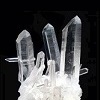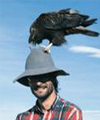| View previous topic :: View next topic |
| Author |
Message |
Tobi
Site Admin

Joined: 07 Apr 2009
Posts: 4250
Location: Germany



|
 Posted: Feb 21, 2023 03:20 Post subject: Re: What does the mim Museum and it minerals mean Posted: Feb 21, 2023 03:20 Post subject: Re: What does the mim Museum and it minerals mean |
|
|
| bob kerr wrote: | | Since we're selecting our favorite and dreaming - i think that Panasqueira Apatite and Siderite on Quartz is a real masterpiece. 20 cm tall!!!!!!! |
Which of the specimens is NO real masterpiece?! ;-)
| alfredo wrote: | | [...]but if I were forced to choose, I'd choose the Franklin zincite. |
Alfredo, when the people who force you are coming - could you please tell them to contact me? ;-)
Jokes aside: If I had to choose, maybe I'd go with Carles (Millan) and take the 40 x 30 x 25 cm (!) piece of aqua, topaz etc. with that 30-40 cm aqua crystal (p. 28) ...
But I also agree with Carles (Manresa) who wrote "however, If I could choose, I would choose the whole museum!" (also p. 28) |
|
| Back to top |
|
 |
BlueCapProductions

Joined: 17 Feb 2009
Posts: 328
Location: Honolulu



|
 Posted: Feb 21, 2023 17:33 Post subject: Re: What does the mim Museum and it minerals mean Posted: Feb 21, 2023 17:33 Post subject: Re: What does the mim Museum and it minerals mean |
|
|
Carles and Jordi,
SUPERB article!!!! Congratulations on the skillful articulation of your experience. It truly was a mind-blowing trip. Your wonderfully illustrated article only shows a FRACTION of the specimens on exhibit. There are so many treasures there that it's a difficult task to choose one as a favorite. I join you in urging ANYONE wanting to visit to just do it!!
If I may do so, allow me to add to the reasons to visit Lebanon. Lebanon is perhaps THE number one spot in the entire world where fossilized remains of animals exist from about 100 million years ago - just prior to the formation of the Chicxulub crater in the Yucatan that was a result of the huge meteorite crashing into our planet causing the mass extinction of over 3/4 of all life on Earth. This is the reason that Salim has expanded the mim Museum to include fossils that are ALL from Lebanon. The main fossil dig for these pieces are about 20 minutes outside of the town of Byblos north of Beirut (the Bible got its name from this town).
In addition to this, Lebanon has an EXTENSIVE past history of Roman, Byzantine and Crusader-era ruins. These ruins can be seen in Sidon (just south of Beirut) and in the city of Tyre where there exists the second largest Roman hippodrome known to exist.
So for ANY ancient history fans out there, who also love minerals, a trip to Lebanon is not a trip you'll soon forget.
I look forward to seeing you again soon!!!
All the best,
-Bryan
_________________
Bryan Swoboda
President, BlueCap Productions |
|
| Back to top |
|
 |
alfredo
Site Admin

Joined: 30 Jan 2008
Posts: 1014



|
 Posted: Feb 21, 2023 22:15 Post subject: Re: What does the mim Museum and it minerals mean Posted: Feb 21, 2023 22:15 Post subject: Re: What does the mim Museum and it minerals mean |
|
|
Lebanon is a beautiful and friendly country and I really enjoyed my time there (unfortunately long before mim museum was established, so now I have a reason to go back again).
To add to what Brian said about Lebanese fossils, the amber from there is not well known outside the country but it has amazing numbers of creepy crawly and buzzy things fossilized in it! Not my field, as you can tell, but they are impressive. The amber localities are in sandstones in the far South.
Oh, and the food in Lebanon is great too, both for carnivores and vegetarians. |
|
| Back to top |
|
 |
James Catmur
Site Admin

Joined: 14 Sep 2006
Posts: 1482
Location: Cambridge



|
 Posted: Feb 22, 2023 04:58 Post subject: Re: What does the mim Museum and it minerals mean Posted: Feb 22, 2023 04:58 Post subject: Re: What does the mim Museum and it minerals mean |
|
|
Like me, you were there before the museum. I went for a wonderful week of work and tourism. I always remember the food and kindness of the people. I loved it. Must go back to see the MIM (and eat the food - the best baklava I have ever had)
| alfredo wrote: | Lebanon is a beautiful and friendly country and I really enjoyed my time there (unfortunately long before mim museum was established, so now I have a reason to go back again).
To add to what Brian said about Lebanese fossils, the amber from there is not well known outside the country but it has amazing numbers of creepy crawly and buzzy things fossilized in it! Not my field, as you can tell, but they are impressive. The amber localities are in sandstones in the far South.
Oh, and the food in Lebanon is great too, both for carnivores and vegetarians. |
|
|
| Back to top |
|
 |
|





